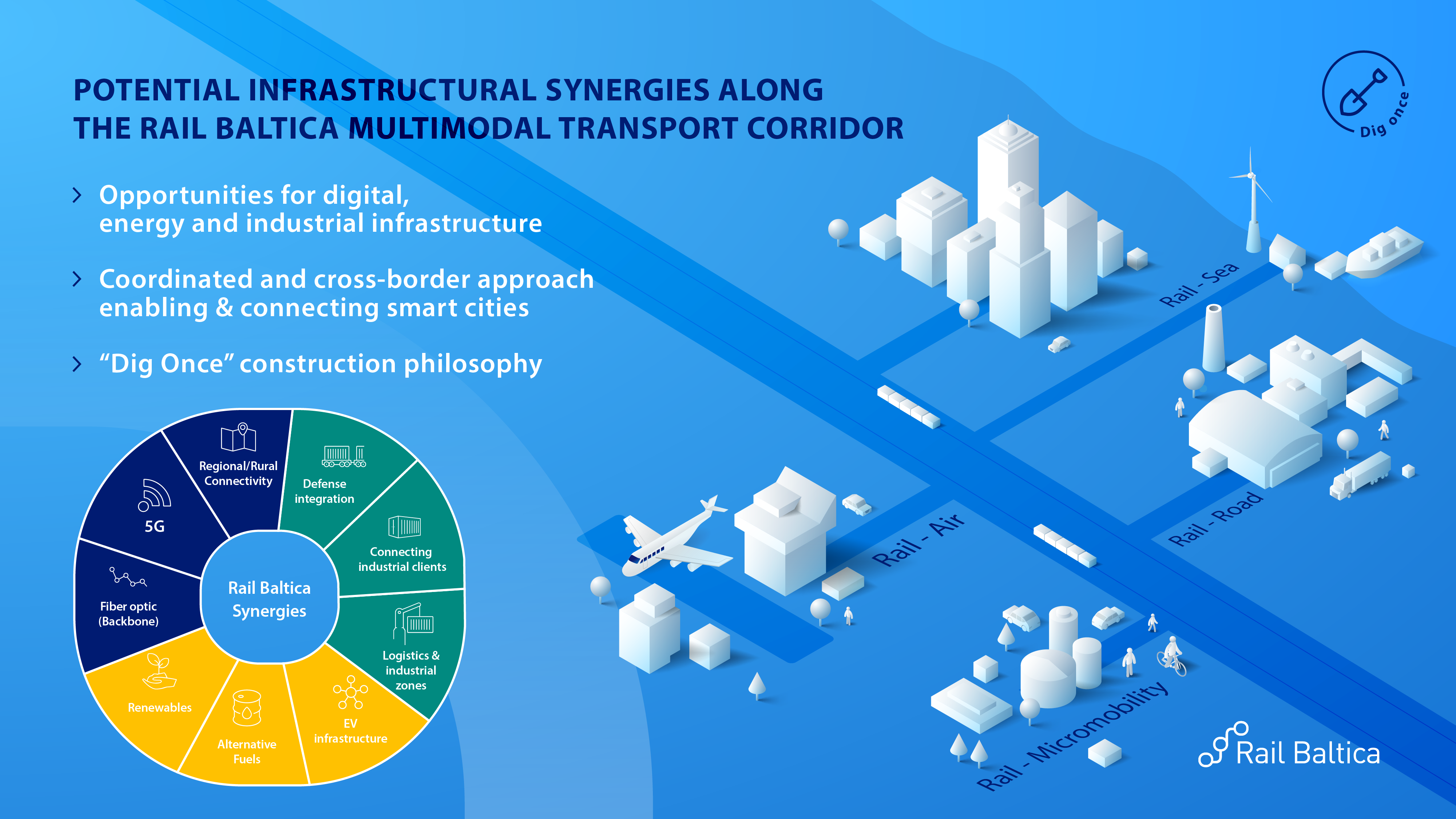Commissioned by the Rail Baltica joint venture RB Rail AS, the Spanish infrastructure consultancy Ineco has delivered a landmark study on the opportunities to maximize the synergies from simultaneous deployment of various infrastructure developments along the Rail Baltica greenfield railway corridor. Rooted in the international best practice “Dig Once” philosophy, the study provides actionable recommendations to Baltic and European authorities on leveraging the 800+km long cross-border railway corridor to co-create also other synchronized and complementary infrastructure along this emerging connectivity backbone in Northeast Europe.
The study rests on extensive international best practice benchmarking, ranging from mobile communication and fiber network solutions in railway megaprojects in Australia and Israel, international 5G case studies on Cooperative, Connected and Automated Mobility (CCAM), Industry 4.0 and Smart City developments and installation of renewable energy generation sources along railway networks in Spain, Belgium, Finland and Austria to electrical vehicle infrastructure approaches in North America, Scotland, as well as freight development and industrial connectivity principles in Germany, France, Spain and United States. The proposed recommendations are also fully in line with the EU’s ambitious “Fit for 55” green transition package.
As Kaspars Briškens, Head of Strategy and Development for Rail Baltica, summarizes: “Rail Baltica is not just a railway. It’s a generational opportunity to create a new multi-infrastructure cross-border connectivity backbone for Northeast Europe. Alongside delivering the new multimodal transport corridor itself, Rail Baltica must also be used as a “Dig Once” platform to co-deliver a new standard of digital, energy and industrial connectivity – an example other megaproject in the future may follow, in Europe and beyond.”
Practical recommendations are provided in the areas of deployment of cross-border 5G mobile networks and fiber optic backbone networks (based on a neutral host approach), implementation of smart stations (including to support smart city developments), deployment of edge computing infrastructure, installation of renewable energy generation solutions (including solar and wind), utilization of traction substations to transfer renewable energy to the electrical grid, development of electrical vehicle infrastructure (both battery and fuel cell based), as well as construction of capillary connections to the Rail Baltica mainline to facilitate accessibility for relevant industrial, defense and/or logistics areas. In addition to infrastructure solutions and functionalities, the study also provides insights into potential future business cases, as well as encouraging the synergies between various funding programmes to enable complementary infrastructure developments with the delivery of the Rail Baltica megaproject.
As part of a comprehensive follow-up to the study, Rail Baltica joint venture RB Rail AS will initiate and lead active engagement with the relevant partners to promote the implementation of the proposed recommendations. This will involve close collaboration with a diverse range of public and private stakeholders, including European institutions, Baltic ministries responsible for transport, digital infrastructure, energy, economic development and defense, NATO partners, municipalities, infrastructure managers, power grid operators, telecom operators, mobility providers, logistics and industrial zone developers, as well as other relevant commercial entities located alongside the Rail Baltica corridor.
The full study report and a 20-page executive summary are available on the Rail Baltica Global Project website.
Other documents available here: https://www.railbaltica.org/about-rail-baltica/documentation/

